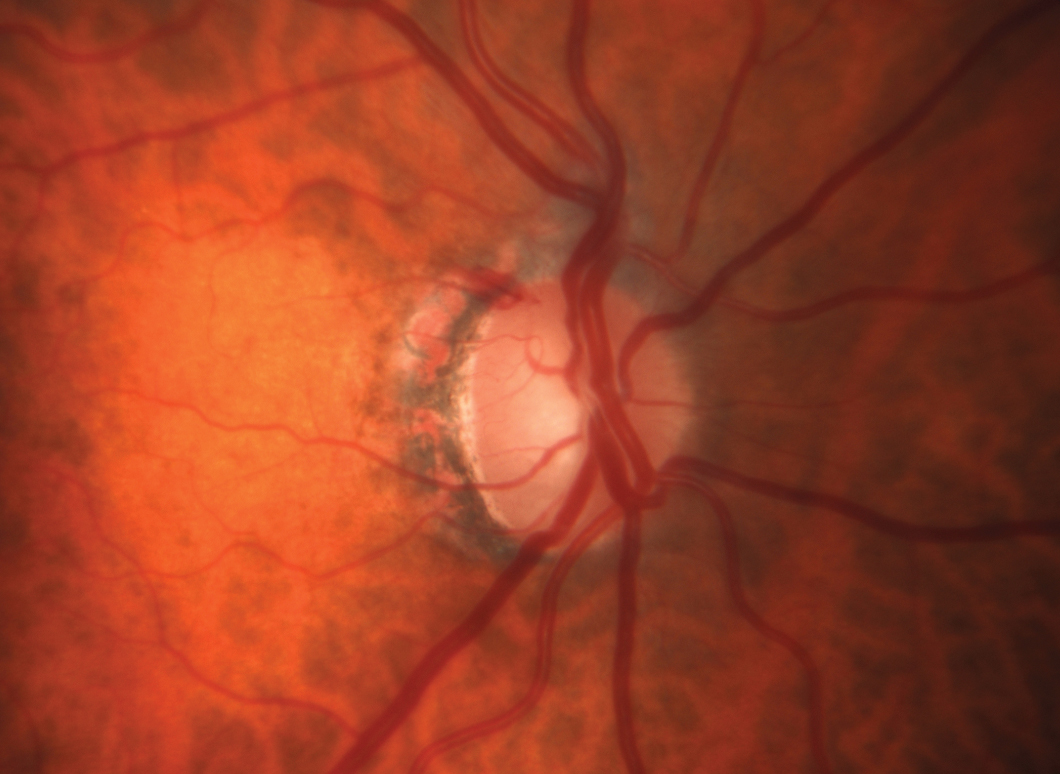 |
| Niacin intake was linked to a lowered risk of glaucoma in this study. Photo: Michael Chaglasian, OD, and Sarah B. Klein, OD. Click image to enlarge. |
Editor’s Note: As part of our “Year in Review” retrospective, we’ve selected the top 30 news stories of the year and are re-sharing them as we close out 2022. Follow along as we count down to number 1!
This story was originally published on January 5, 2022.
No. 15 biggest news story of 2022:
A recently published population-based study of the National Health and Nutrition Examination Survey (NHANES) suggests daily consumption of niacin may be associated with a lower chance of developing glaucoma.
The study used 2005 to 2008 NHANES data and included subjects 40 and older (n=5,768) who participated in the dietary intake interview and vision health questionnaire parts of the survey. Glaucoma diagnosis was self-reported and confirmed by fundus imaging and the criteria of the International Society of Geographical and Epidemiological Ophthalmology (ISGEO). The researchers used survey logistic regression analysis to examine the association between niacin intake and glaucoma.
They reported a significant decrease in the crude odds of self-reported glaucoma in the third and fourth quartiles of those on daily niacin consumption. They say this equated to 21.01mg to 28.22mg per day and greater than 28.22mg per day, respectively. They noted a similar trend on fundus imaging of subjects with niacin intake in the third and fourth quartiles. They determined that the odds of glaucoma based on fundus imaging remained significantly lower for niacin intake in the third and fourth quartile levels, after adjusting for covariates. However, according to the ISGEO criteria, no significant association was found between glaucoma and daily niacin consumption.
“Participants with a niacin intake greater than 21mg per day (quartiles three and four) had a significantly lower risk of glaucoma compared with those with niacin intake of less than 15.33mg per day (quartile one),” the researchers noted in their paper.
“Niacin, a form of vitamin B3, includes two vitamers (nicotinamide (NAM) and nicotinic acid), which are involved in the synthesis pathway of nicotinamide adenine dinucleotide (NAD),” the researchers explained. “The role of NAD in glaucoma has been studied in several laboratory investigations. The first possible mechanism for protection is related to the mitochondrial energy production pathway. Many studies have demonstrated a possible association of mitochondrial dysfunction with glaucoma. As retinal ganglion cells are responsible for transducing visual information from the retina to the brain, they require a relatively large amount of energy. Thus, reduction of NAD, via NAD-consuming enzymes, may limit ATP production and result in the failure to provide sufficient energy for sustaining the health of the cell, ultimately leading to the degeneration of retinal ganglion cells.”
The researchers noted another potential benefit of NAD is its prevention of axonal degeneration. They believe there’s a possibility that restoring the NAD precursors, such as NAM, could enhance retinal ganglion cell resistance against glaucomatous neurodegeneration.
“Our results show that the odds of having glaucoma were nearly two-times lower in subjects with a daily intake of niacin in the third and fourth quartiles, as compared with the first and second quartiles,” the researchers wrote. “Despite not being statistically significant, subjects who had niacin intake in the fourth quartile also had odds of glaucoma diagnosed by ISGEO approximately half of those in the second quartile.
“The current recommended dietary allowance (RDA) of niacin equivalent is 16mg per day for men and 14mg per day for women. Our results have shown that the mean daily niacin intake of individuals aged 40 and older was 24.18mg per day, which is greater than the RDA dosage. Though possible adverse effects of niacin include flushing, chills and gastrointestinal side effects, several studies have demonstrated that intake of nearly 1g (or up to 3g) of NAM daily is well-tolerated even in long-term administration.”
“Nevertheless, individuals with daily niacin intake within the first quartile (<15.33mg per day) are more likely to have an intake less than RDA, which may help to explain why they are more likely to have glaucoma. These findings indicate an association between daily intake of niacin and glaucoma, possibly due to increasing retinal ganglion cell susceptibility to degeneration or damage from IOP.”
They concluded that increased daily niacin intake was associated with lower glaucoma likelihood. They also said there seems to be a certain threshold of niacin dosage for its glaucoma prevention effects to be most potent. They added that further research is needed to determine dosage and time relationships and their impact on the optic nerve.
Taechameekietichai T, Chansangpetch S, Peerawaranun P, et al. Association between daily niacin intake and glaucoma: National Health and Nutrition Examination Survey. Nutrients. 2021;13(12):4263. |

